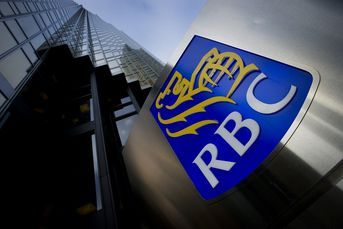Morgan Stanley reaps payoff from lending business
Securities-based loans and mortgages helped drive profit margins up to a record 21%.
Morgan Stanley’s wealth unit drove closer to its goal of 22% to 25% profit margins as financial advisers spent more time helping their clients take on more debt.
Even as commission revenue declined and asset flows slowed, the second quarter profit margin hit 21%, up from 19% a year earlier. The increase is due in large part to more clients borrowing against their portfolios.
Client liabilities hit a record $45 billion last quarter, a 32% increase from the same period last year.
The jump in profit margin is significant because it marks the first time the firm has broken through the 20% threshold since 2009 when Morgan Stanley and Smith Barney officially combined forces.
“We have seen a network effect build as financial advisers use products and find they are effective and then discuss the opportunities with additional clients,” the firm’s chief executive, James Gorman, said on a conference call announcing earnings. It “makes our client relationships deeper and stickier.”
Net interest income, a measure in part of how much the firm is making from its lending business, overtook revenue the firm received from commissions and fees. Net interest jumped 30% from the second quarter of 2013 to $578 million. That compares to $511 million the firm generated from commissions and fees, which declined by 10% from the second quarter last year.
Securities-based loans, in which clients put their portfolio up as collateral, were up 47% year-over-year. Residential real estate loans were up 65% year-over-year.
“We drove new production records in mortgage and securities-backed lending despite sluggish demand for mortgages across the industry,” Mr. Gorman said.
Total revenue at the wealth unit was $3.7 billion, up 5% from the year-ago quarter. Profit was up 11% to $471 million.
Lending has been a crucial part of the firm’s bank strategy in its wealth management unit.
Margins are higher on lending than many other products and services offered be the firm’s brokers. Lending revenue is considered “non-compensable” in that it does not go through the traditional grid-based payout formula, so advisers take home a smaller share of revenue than they would on annual fees and commissions on investment products.
The firm encourages advisers to do more loans by tying bonuses to growth in liabilities.
Compensation as a share of revenue declined to 59%, from 60% in the previous quarter, and closer to Mr. Gorman’s stated target of 55%.
“The reason we guide down to 55% or lower compensation ratio over time goes to growth in net interest income and execution of our bank strategy and tremendous operating leverage we have as we continue to deploy deposits in lending product,” the firm’s chief financial officer, Ruth Porat, said on the call.
The loan growth mirrors efforts at the other wirehouses, but it is an area where Morgan Stanley has lagged behind. Client loan balances at Bank of America’s wealth division, which includes both Merrill Lynch Pierce Fenner Smith and U.S. Trust, were $123 billion for the second quarter.
Bank of America reported profit margins of more than 25% across its wealth management units.
Morgan Stanley’s U.S. bank does not have brick-and-mortar offices, so loan growth will come primarily from existing clients with wealth management, Ms. Porat said.
In addition to more lending, Mr. Gorman said continued focus on expense reduction was also helping drive margins higher at Morgan Stanley. Non-compensation expenses fell 9% from the year-earlier quarter to $762 million. The number of retail locations fell to 636 from 676 in the second quarter last year, which reflects consolidation of physical space as leases run out, Ms. Porat said.
Morgan Stanley brought in more assets in the quarter than Merrill Lynch. Fee-based asset flows alone totaled $12.5 billion, above the overall $12 billion Bank of America’s wealth units reported in net flows.
Like Merrill Lynch, Morgan Stanley reported it had crossed the $2 trillion in assets mark in the second quarter. The $2.002 trillion the firm reported was still below the $2.017 trillion in client balances at Merrill Lynch, but the numbers are not entirely comparable because Merrill Lynch includes other items, such as Bank of America deposits and loans in its total.
Charles Schwab Corp. reported yesterday it had $2.4 trillion in total client assets that came from both direct investors and registered investment advisers in Schwab’s Advisor Services network.
Overall, approximately 38% of Morgan Stanley’s assets were in fee-based accounts, the firm said.
Growth in the number of advisers and branch offices remained slow, however. The firm reported a net loss of around 110 advisers in the second quarter as headcount fell to 16,316.
Ms. Porat said the firm was focused on productivity of existing advisers and did not have growth targets for headcount or branch offices.
On average, Morgan Stanley advisers produced $908,000 in revenue, up from $866,000 in revenue a year earlier.
Learn more about reprints and licensing for this article.






